Pros: Great powertrain choices, including hybrids; fun to drive; hybrids have spare tires
Cons: Interior is too small and chintzy for the money; physical controls missed with big touchscreen
The 2024 Ford Escape is a compact SUV that’s easy to like. You climb in, and the car-like driving position makes you feel like you’re about to take a spin in a sporty hatchback – albeit with a higher viewpoint. The driving experience furthers that impression, with above-average handling for the segment, and a terrific lineup of engines, including a rare performance upgrade and two hybrids (the regular Escape Hybrid and the Escape Plug-in Hybrid). Upper trim levels also put on a good show with a vast 13.4-inch widescreen-oriented touchscreen boasting crisp graphics and great Apple/Android integration.
It feels like there’s a “but” coming here, right? There is. As likable as the Escape is, it’s hard not to cringe at the price tags. Though they certainly align with others in the segment, the Escape is considerably smaller inside than a Honda CR-V, Toyota RAV4, Kia Sportage, etc. Its back seat and cargo space aren’t that different from some subcompact SUVs. The interior is also hopelessly drab with below-average materials – even soft-touch surfaces look like they’re hard plastic. As such, the Escape comes across as being poor value for the money. Perhaps if you can get a great deal and its size doesn’t present an issue, its easy-to-like nature can shine through (especially the hybrids), but all things being equal, it’s tough to recommend.
Interior & Technology | Passenger & Cargo Space | Performance & Fuel Economy
What it's like to drive | Pricing & Trim Levels | Crash Ratings & Safety Features
What's new for 2024?
After major changes made last year, it carries over largely unchanged for 2024. The Escape Active trim level is now the base trim level, though, effectively raising the price and further simplifying the lineup.
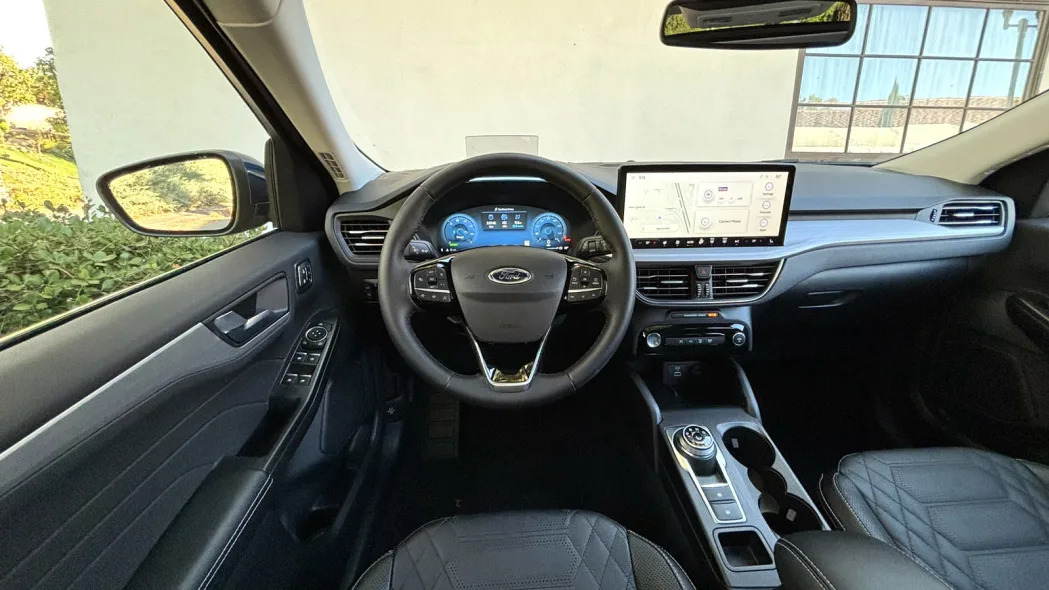
What are the Escape interior and in-car technology like?
Materials quality is disappointing for this price point and segment. Even soft-touch surfaces on the dash and door tops look like hard plastic – which is what actually covers everything else. The extremely drab design certainly doesn’t help the situation, especially in an all-black interior. The uniquely quilted leather seats found in upper trim levels are its only above-average element in terms of design and quality. The cabins of all rivals are superior on both fronts (OK, maybe not the Chevy Equinox).
The tech situation is at least better, albeit with some nits to pick. The standard 8-inch touchscreen runs Ford’s user-friendly last-generation tech interface. It’s not flashy, but it works, and we think that’s all that most folks want. Nevertheless, the 13.2-inch touchscreen utterly dwarfs it. It also runs a completely different interface and annexes the climate controls, eliminating the base set-up of physical buttons and knobs lower on the dash. Those controls are always left on the screen, which is good, but the air recirculation button is buried in a submenu, and the heated seat controls are more complicated than just tapping a physical button. We also don’t like that the row of permanently docked menu icons of the base system has disappeared from this supposed upgrade. It’s more likely you’ll need to tap-tap-tap to go between menus now.
On the upside, we do like that the car remembers the last screen you were on when last using the car, and that displays from the car’s interface can appear at the same time as Apple CarPlay and Android Auto (as opposed to Apple/Android taking over the entire system). For instance, you can still see what’s playing on SiriusXM radio while looking at Google Maps.

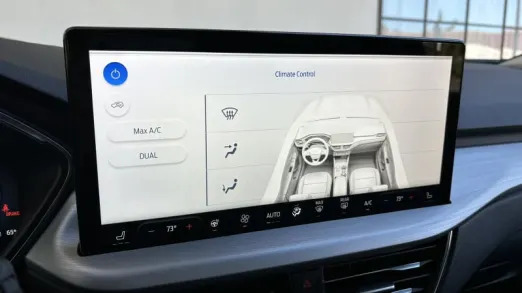
How big is the Escape?
The Escape is notably less spacious than top rivals from Honda, Toyota, Kia, Hyundai … actually, almost every compact SUV. Taller occupants up front are more likely to squish those in back, or make fitting child seats more difficult. That said, those taller occupants will at least find a power driver seat particularly good at adjusting to long legs without needing to stretch way out to reach the wheel.
The Escape is the rare compact SUV that comes with a 60/40-split sliding back seat. In theory, this is a great feature that increases versatility. It can bring children a little closer to you or open up extra cargo space. The trouble is, utilizing that sliding seat is more of a necessity than a handy bonus feature. You see, on paper, you may notice the Escape’s 34.4 (hybrid) or 37.5 cubic-feet (non-hybrid) cargo volumes are roughly equal to the biggest in the segment, but those volumes are with the back seat slid all the way forward. You’re basically left to choose between max cargo or back-seat passengers. You can read more about this in our in-depth Ford Escape luggage test cargo review.
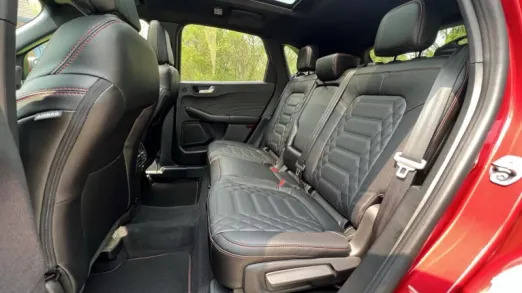
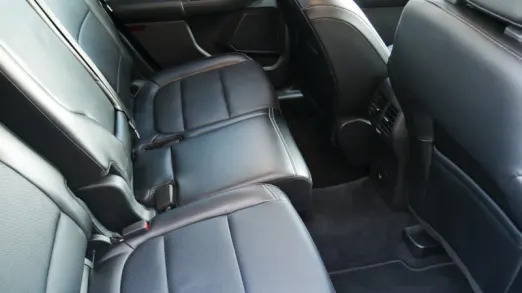
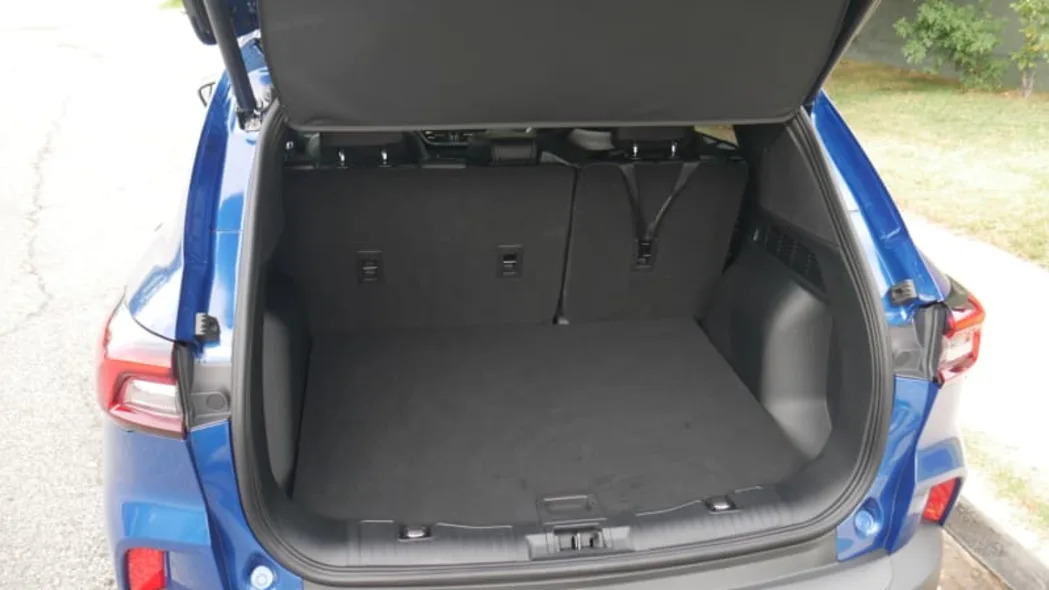
What are the Escape fuel economy, performance and electric range specs?
The Escape Active and ST-Line come standard with a 1.5-liter turbocharged three-cylinder that produces 180 horsepower and 199 pound-feet of torque. An eight-speed automatic and front-wheel drive are standard; all-wheel drive is optional. EPA fuel economy figures were not available at the time of this writing for 2024, but they should be almost identical to those for 2023: 27 mpg city, 34 mpg highway and 30 mpg combined with FWD and 26/32/28 with AWD.
The ST-Line Select, ST-Line Elite and Platinum come standard with a 2.0-liter turbocharged four-cylinder good for 250 hp and 280 lb-ft of torque, one of the greatest amounts available in the compact SUV segment. It too gets an eight-speed automatic, but all-wheel drive is standard. Fuel economy takes a hit to 23/31/26 (2023 figures).
The regular Escape Hybrid is available in all ST-Line trim levels and the Platinum. It consists of a 2.5-liter naturally aspirated inline-four and an electric motor that produces a total system output of 192 hp. This is a bit below average for a hybrid compact SUV. Powering that motor is a battery pack replenished by the engine and recouping energy typically lost while braking; you do not need to plug it in. Front- or all-wheel drive are available. Fuel economy with either is the same at 42 mpg city, 36 mpg highway and 39 mpg combined.
The Escape Plug-in Hybrid has a much larger battery, which must be plugged in to take advantage of the 37 miles of all-electric range on hand. Do that, and depending on your commute, you’ll rarely be paying for gas. The EPA rates it at 101 miles-per-gallon-equivalent, which is more efficient than the Kia Sportage and Toyota RAV4 plug-ins. The PHEV is unfortunately only available with front-wheel drive.
What's the Escape like to drive?
Regardless of powertrain, the Escape is one of the more engaging compact crossovers to drive with a stiff chassis and a suspension just on the firm side of comfortable. Its collection of torque-rich powertrain options only heighten its athletic bent. The steering is a bit numb at initial turn-in, but there is a surprising amount of feedback provided through turns. In general, the Escape drives more like a car than an SUV, very much for the better.
The base 1.5-liter turbocharged three-cylinder engine is a little sluggish off the line, but it comes to life as the turbo builds pressure. It feels smooth and responsive switching through the gears, and we’re glad Ford avoided putting a continuously variable transmission in here (as the Honda CR-V and Subaru Forester have). The more powerful 2.0-liter turbo-four is certainly quicker, but it, too, can feel a little slow off the line. Once underway, passing power from the 2.0-liter is very good due to its abundance of midrange torque, and it’s rated to tow as much as 3,500 pounds.
Despite having less torque than the gas-only powertrains, the Escape Hybrid’s torque comes early, helping it get moving quickly at low rpm. Its electronic CVT can drone a bit, especially under steady acceleration, but it’s not bothersome under most driving. The Escape Plug-in Hybrid basically just turns the dial up on the regular Hybrid, with far more time spent driving under electricity, even when the all-electric range is depleted. Like other PHEVs, there are multiple powertrain modes, including an automatic mode that blends the two power sources as needed, one that saves the electric range for later (say, after a highway drive when you enter a city) and one that locks out the gas engine completely. In regards to the latter, most PHEV competitors will automatically kick on the gas engine should you lay into the throttle – the Escape does not, instead asking you to confirm with a press of the OK steering wheel button if you want full power. If you don’t, you’ll be dealing with some pretty pokey acceleration, albeit free of burning gasoline. In any of the above, transitions and power delivery are seamless. This is a sophisticated powertrain.
What other Ford Escape reviews can I read?
2023 Ford Escape First Drive Review
Going over the substantial changes made for the 2023 model year, including revised styling, new tech and the new ST Line trim levels.

Ford Escape Luggage Test
We take a deep dive into how much real-world stuff the Escape can hold and explain why its official cargo volume figure is misleading.
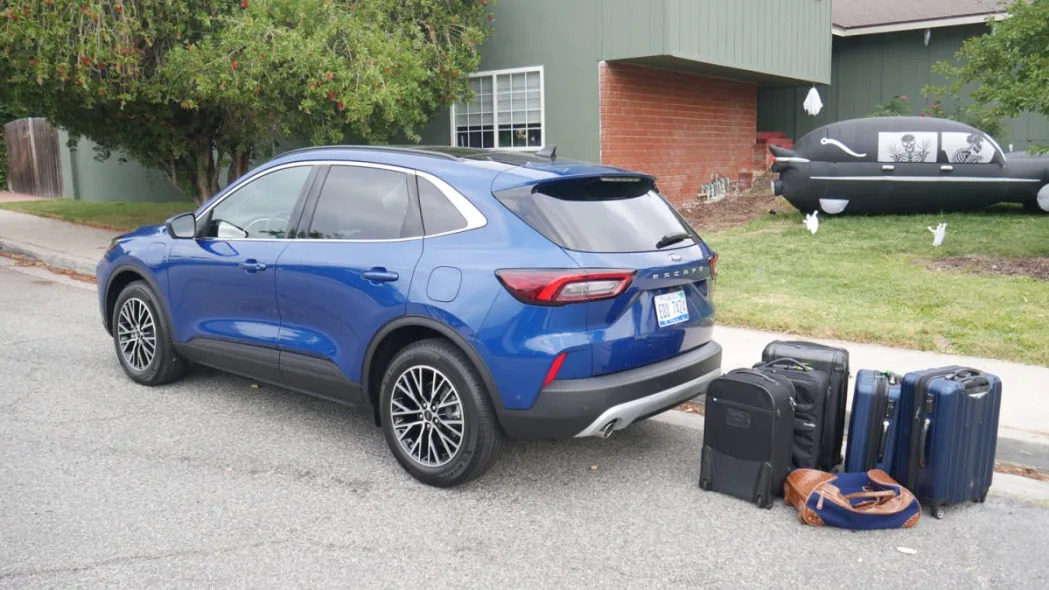
Ford Escape Cupholder Mega Test
And now for an even deeper deep dive: how the Escape's cupholders can handle a 32-ounce Nalgene bottle.
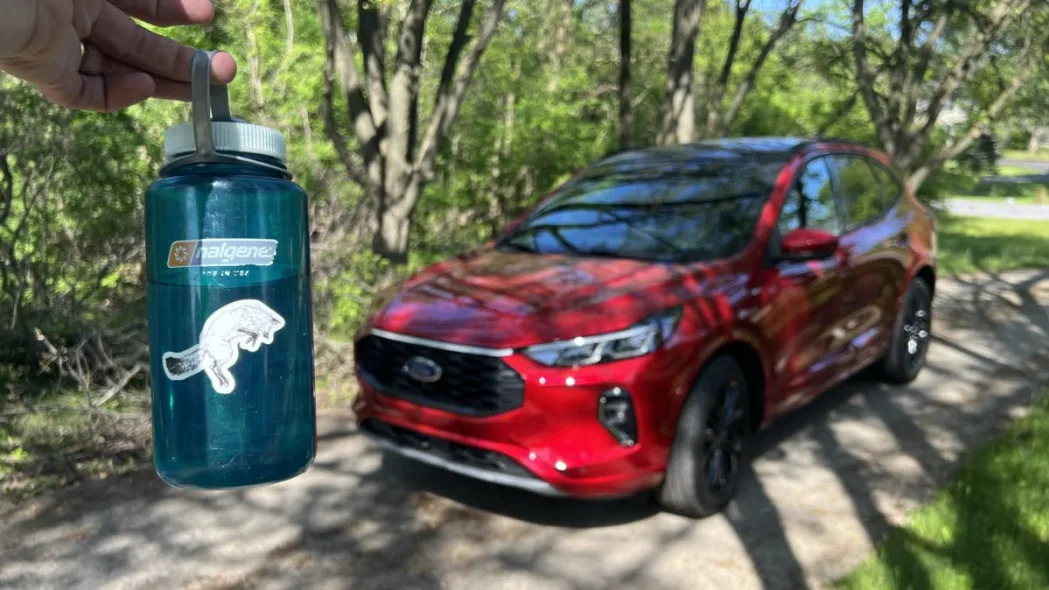
2020 Ford Escape Interior Review
The interior has changed since we did this review, most notably the smartphone storage and the range-topping tech interface, but today's base tech interface is still similar to what we reviewed and everything else largely carries over. That includes the subpar materials quality.

2020 Ford Escape SE Sport Hybrid Drivers' Notes Review
Our editors test the Escape Hybrid, finding it got fuel economy in the low to mid 30s without much effort to be thrifty.

What is the 2024 Escape’s price?
While other compact SUVs offer a distinctively named trim level or two that speaks to its sportier or more luxurious elements than the typical S, SE, SEL format, the Escape is 100% distinctively named. Things kick off with Active, but despite the name, it’s not particularly distinctive in terms of its look or capability. The three ST-Line trim levels are, however, at least in terms of appearance, which boasts sportier trim pieces and wheels. The Platinum is the most luxurious in terms of equipment, but as we discussed in the interior section, no Escape interior rises anywhere close to “luxury.”
All prices below include the mandatory $1,495 destination charge. All-wheel drive is a $2,170 option. The Escape Plug-In Hybrid is eligible for a $3,750 federal tax credit plus possible state-level credits.
Active: $30,740
ST-Line: $31,735
ST-Line Select: $35,435
Platinum: $38,860
ST-Line Elite: $39,855
Hybrid ST-Line: $33,340
Hybrid ST-Line Select: $36,435
Hybrid Platinum: $38,360
Hybrid ST-Line Elite: $39,460
PHEV: $40,500
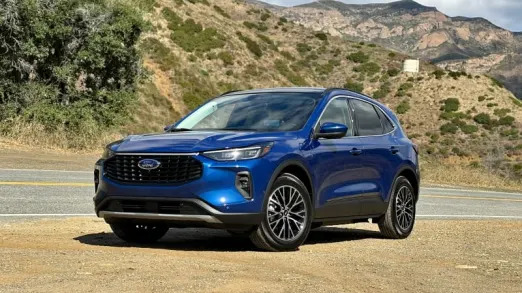

PHEV (left/top) versus ST-Line Elite. Note the difference in wheel and the trim around the windows.
What are the Escape safety ratings and driver assistance features?
Every Escape includes forward collision warning with automatic emergency braking and pedestrian detection, blind-spot and rear cross-traffic warning, lane-keeping assist, and road departure warning. The available Ford Co-Pilot 360 Assist package adds evasive steering assistance and adaptive cruise control with stop-and-go capability and lane-centering steering assist.
The NHTSA gives most Escapes five out of five stars for overall crash protection, plus five stars for frontal and side crash protection. The PHEV also gets a five-star overall score, but the frontal score is lowered to four stars. The Insurance Institute for Highway Safety gave the Escape the best-possible score of “Good” in all pertinent crash tests, but the new IIHS updated side test (most vehicles have not been subjected to this yet) where it got a second-worst/third-best “Marginal” grade. The IIHS had not tested the Escape’s headlights or driver assistance tech at the time of this writing.
Related video:


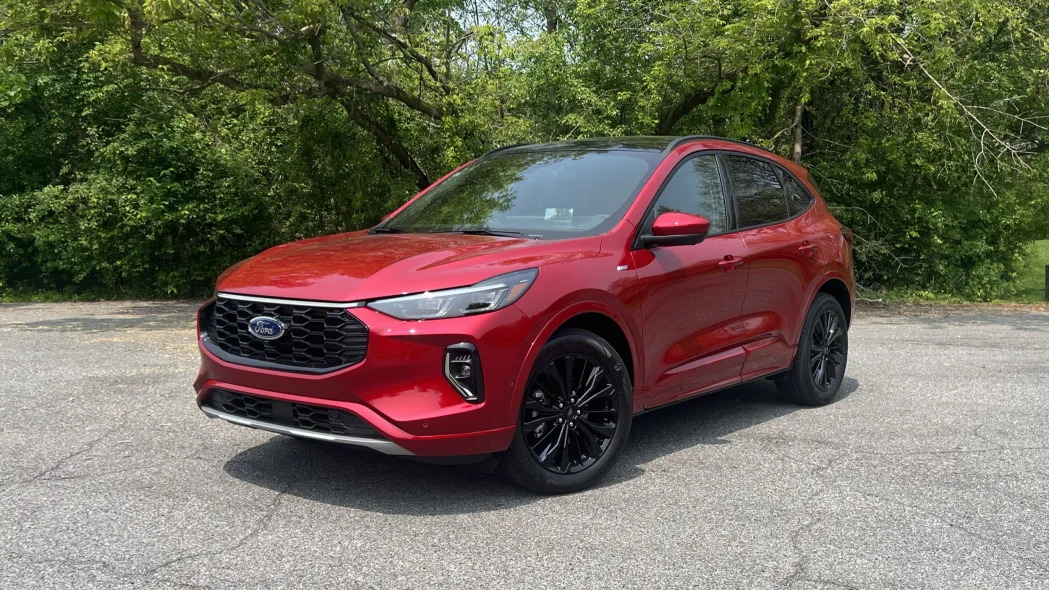









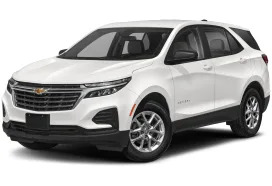
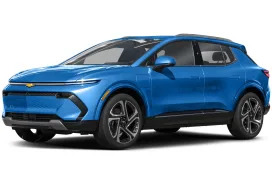

Sign in to post
Please sign in to leave a comment.
Continue